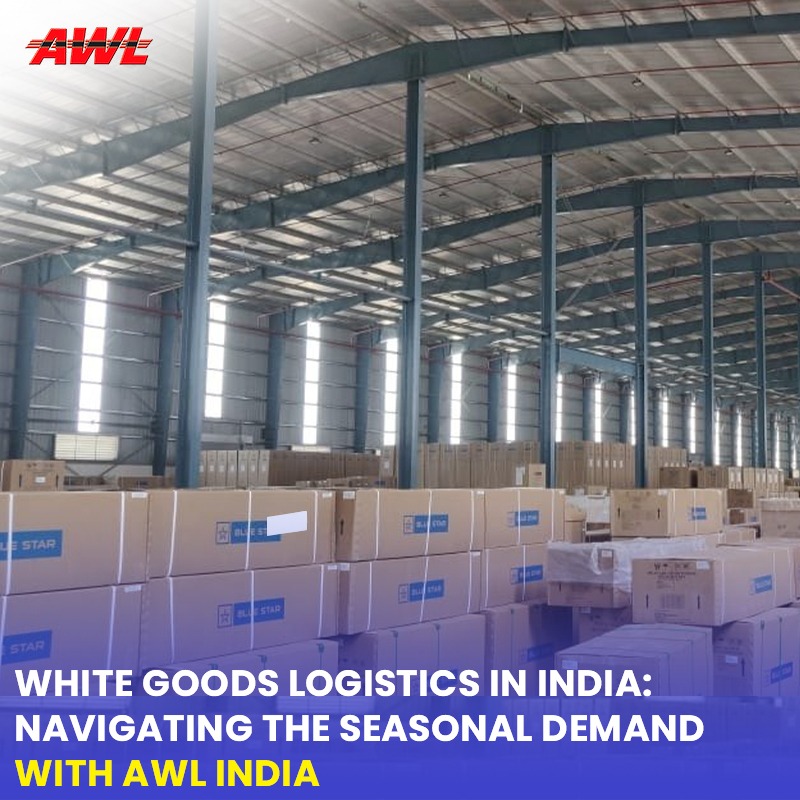

In a fast-changing warehouse management environment where operational efficiency and inventory quality are critical, the incorporation of modern technology such as warehouse management systems (WMS) has become essential as organisations battle to satisfy changing market demand. This method offers businesses options that are personalised to their requirements, employing the experience and infrastructure of third-party logistics providers (3PLs) such as AWL India. As a pioneer in warehouse management systems, AWL India investigates the consequences and advantages for businesses facing the challenges of contemporary supply chain management. It explores the intricacies of a 3PL WMS.
A warehouse management system (WMS) is a sophisticated software application carefully designed to simplify and improve warehouse operations. They include functions from warehouse inventory tracking systems to order fulfilment to logistics, ensuring seamless integration of warehouse operations solutions, except the vital role of warehouse management systems accepts modern supplies. By implementing robust warehouse management system solutions, AWL India enables businesses to achieve operational efficiencies, reduce errors and deliver exceptional service to their customers.
White Labelling 3PL WMS involves customising and branding third-party logistics provider (3PL) warehouse management system solutions to specific customer needs This approach leverages the expertise and strategy of a reputable 3PL partner like AWL India, without the burden of improvements to the home or maintenance for. By adopting a white labelling 3PL warehouse management system, businesses can streamline operations, optimise product quality, and focus on core competencies while benefiting from customised warehouse management solutions.
Before diving into specifics, it's essential to understand the key features that make white labelling 3PL WMS a valuable solution for businesses.
1. Customization: White labelling allows businesses to tailor WMS solutions to their specific business processes, processes and branding needs, ensuring seamless integration with existing systems and processes.
2. Scalability: White labelling provides scalability for 3PL WMS business development and evolving needs, and allows new features and functionality to be added as needed.
3. Cost-Effectiveness: By partnering with a 3PL for white labelling WMS, businesses can avoid significant upfront investments in software development and infrastructure, minimising capital expenditure and operational costs.
4. Knowledge and Support: AWL India, as a trusted 3PL warehouse management solution provider, provides expert guidance and support throughout the white labelling process to ensure smooth implementation and continuous improvement.
Before exploring the advantages, it's crucial to grasp the benefits that white labelling 3PL WMS brings to businesses seeking streamlined warehouse management solutions.
1. Improved Efficiency: White labelling 3PL warehouse management system enables businesses to streamline warehouse operations, optimise efficient warehouse inventory tracking systems, and enhance order fulfilment processes, resulting in improved efficiency and productivity.
2. Enhanced Visibility: By providing real-time visibility into warehouse activities, white labelling WMS allows businesses to make informed decisions, optimise resource allocation, and respond quickly to changing market demands.
3. Cost Savings: Leveraging a white-labelled WMS from a 3PL like AWL India helps businesses reduce IT infrastructure costs, software development expenses, and operational overheads, leading to significant cost savings.
4. Focus on Core Competencies: Outsourcing WMS management to a trusted 3PL partner allows businesses to focus on their core competencies and strategic initiatives while the 3PL handles day-to-day warehouse operations and technology management.
Before implementing the white labelling 3PL warehouse management system, it's vital to consider factors such as compatibility with existing systems, scalability to accommodate future growth and the availability of comprehensive support and maintenance services.
1. Compatibility: Ensure that the white-labelled WMS solution aligns with existing IT systems, processes, and workflows to facilitate seamless integration and operation.
2. Scalability: Choose a white-label WMS solution that offers scalability to accommodate future growth and expansion, allowing for the addition of new features and functionalities as needed.
3. Support and Maintenance: Partner with a 3PL provider like AWL India that offers comprehensive support and maintenance services to ensure the smooth operation and optimization of the white-labelled warehouse management system solution.
In conclusion, the adoption of a white labelling 3PL warehouse management system provides businesses with a versatile, cost-effective, and scalable way to optimise warehouse management services through a reputable 3PL partner like AWL India knowledge and systems to use to optimise their warehouse operations, increase efficiency, and keep up with fuel in a fiercely competitive market -and can grow | Businesses that employ a white label 3PL warehouse management system may concentrate on their core strengths while accessing advanced warehouse management capabilities suited to their requirements. AWL India's dedication to offering bespoke solutions enables organisations to confidently traverse the complexities of contemporary supply chain management, resulting in continuous success and profitability in an ever-changing business environment.

